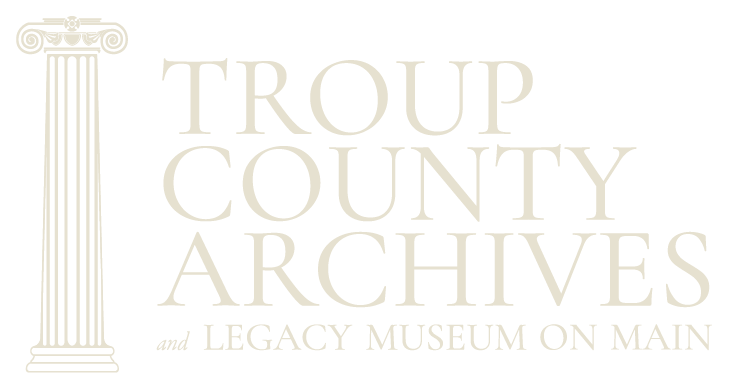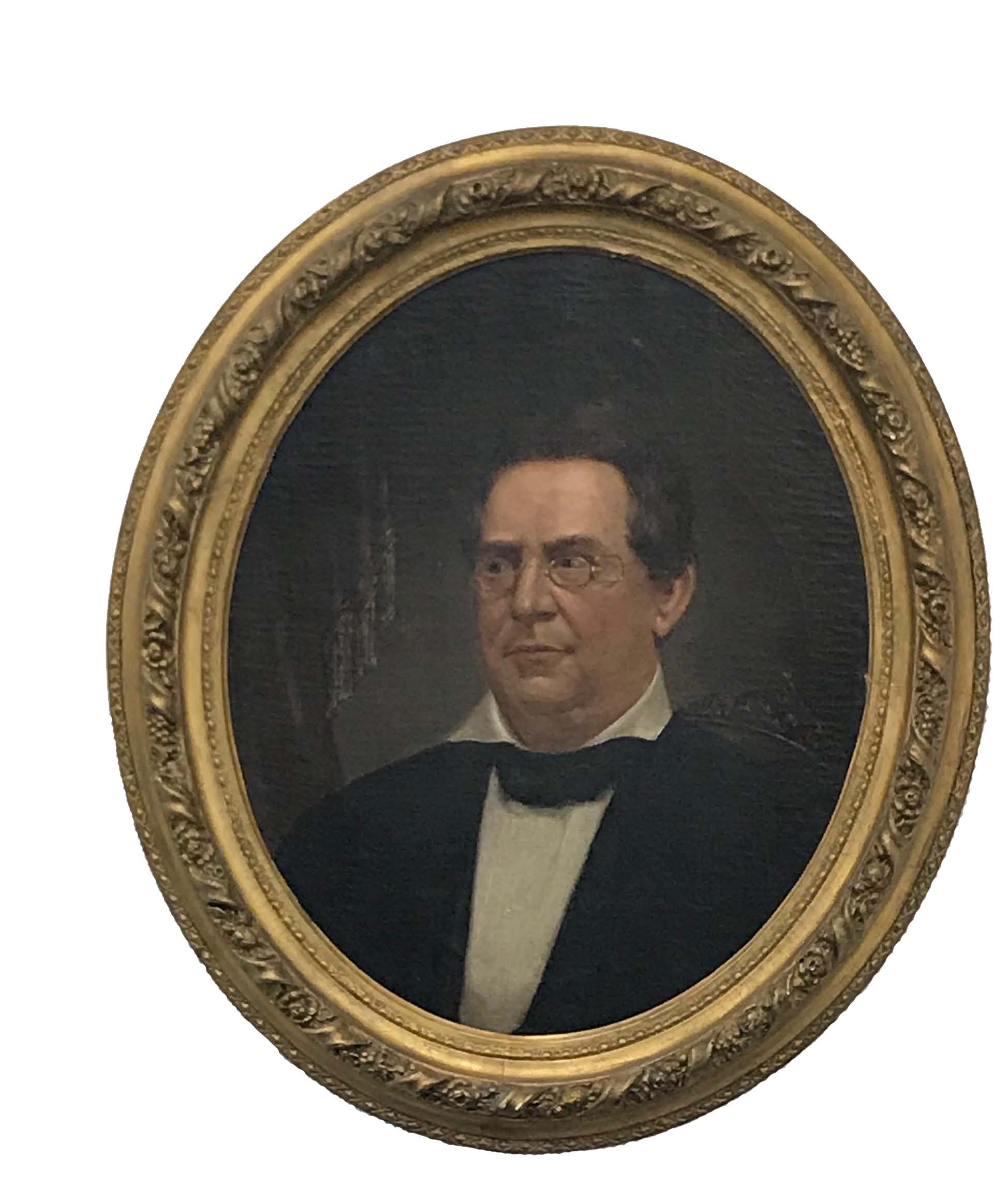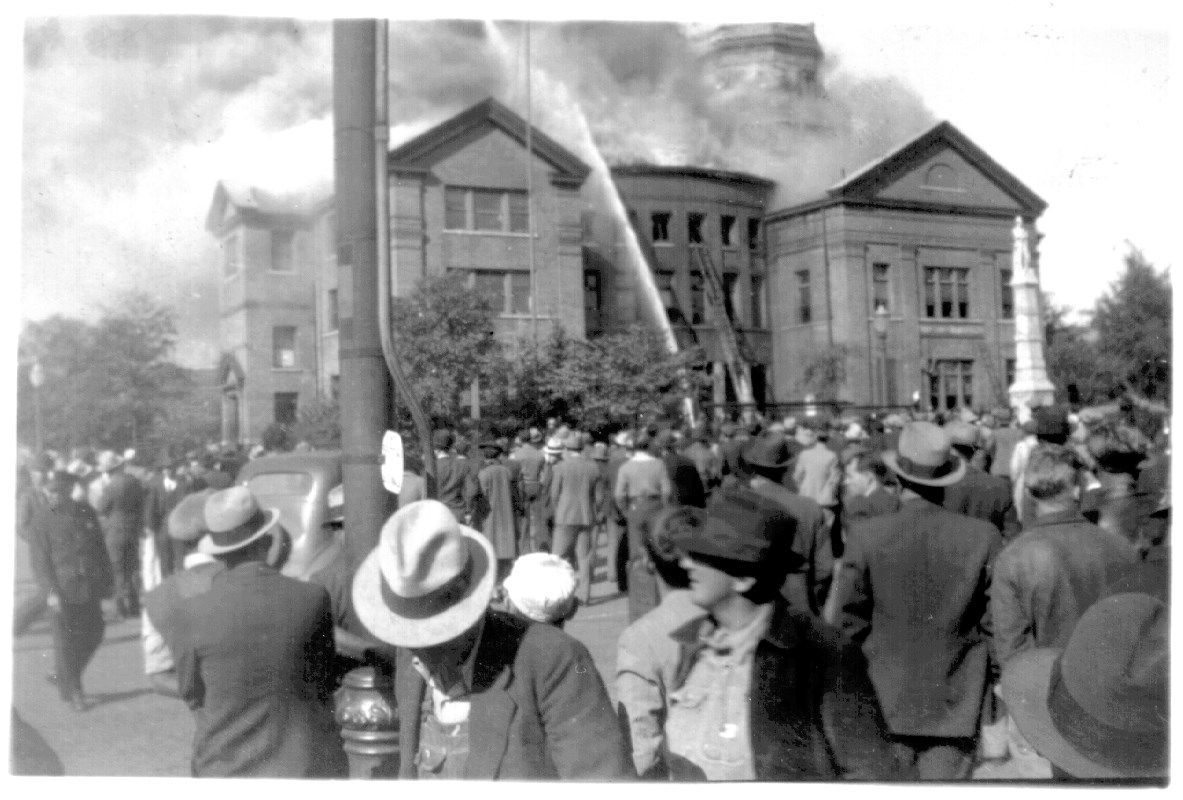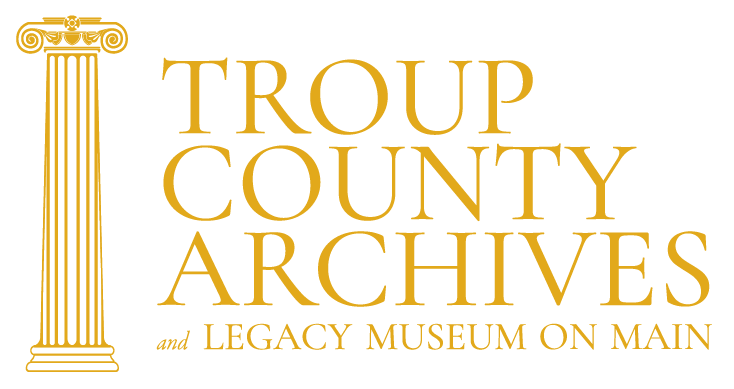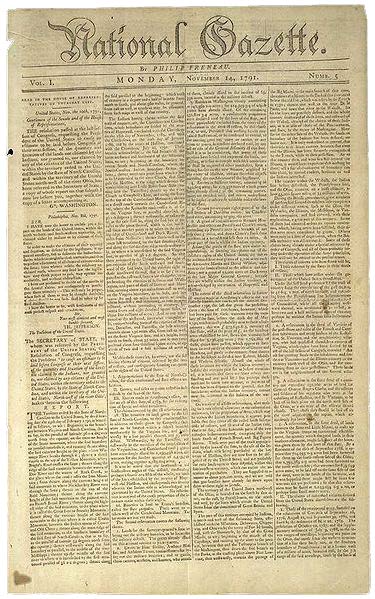
The Monday, November 14, 1791 issue of the National Gazette. Image courtesy of Library of Congress
Fake News, partisan reporting, selective publishing. Is this just a product of modern times or has the press always been biased?
Going back to the early days of our Republic, the press leaned politically one way or the other. Differences exist, however, between the early republic and today’s information environment. Firstly, it was understood that the press was partisan. Several founding fathers wrote harsh op-eds criticizing one another and political issues. Second, there is a significant difference between information literacy and consumption. The readers of the early republic consumed their news through letters, newspapers, and word-of-mouth, and thus tended to be more critical of everything they heard. As the rise of the journalism profession occurred, the press began to pride themselves on what they presented as unbiased reporting. Ameri-cans began to trust the information provided to them through reliable sources such as radio, television, and newspaper. The Internet changed everything. In an online environment where information is not vetted, anyone can create a simple website or social media account and publish false, deceptive, and scandalous information to a large number of people, often with no concern of being identified. Algorithms that seek to promote postings and publications hone in on those gaining large numerical attention and distribute these to more and more people. In order to better understand how today’s news is created and circulated, and to become more responsible consumers of digital information, we first must look at the origin of news delivery.
George Washington is referred to as a “news junky” by certain historians. He subscribed to numerous newspapers throughout the country and read them faithfully. However, when the National Gazette and Aurora became vocal critics of his administration, he canceled his subscriptions. Although, much to Washington’s annoyance, three copies of these publications continued appearing on his doorstep every morning, six days a week.
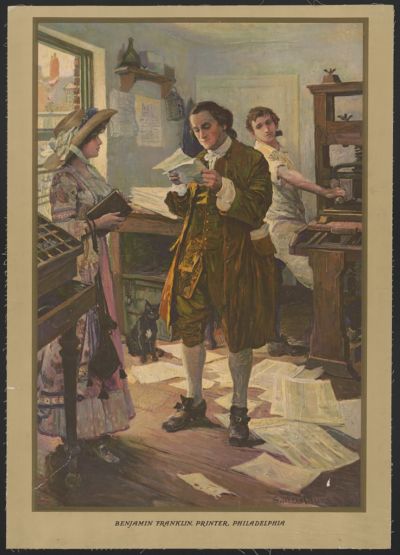
“Benjamin Franklin, Printer, Philadelphia.” Image courtesy Library of Congress
Benjamin Franklin is attributed with founding the United States Postal Service. Franklin owned and printed The Pennsylvania Gazette. In England and in Colonial America, those appointed as postmasters were able to control which newspapers could be distributed and if they could travel without postal fees. This made a postmaster’s job lucrative for printers as they could control the distribution of information and the news. Franklin’s own Pennsylvania Gazette was barred from the mail when a rival newspaper printer held the position of postmaster, which can be seen as an early form of censorship.
Franklin began his postal career in 1737 when he was appointed postmaster of Philadelphia. On August 10, 1753, Franklin and William Hunter of Virginia became joint postmasters for the Crown in America. In 1763, Franklin conducted an extensive survey of post roads and post offices from Virginia to New England. Putting an odometer on the axle of his carriage, Frank-lin was able to measure distances between post offices and traveled approximately 1,600 miles. In 1774, Benjamin Franklin was dismissed as a joint postmaster general for the Crown in America as he was thought to be too vocal for the independence of the Colonies.
On July 26, 1775, the Second Continental Congress appointed Benjamin Franklin the first Postmaster General of the United States Postal Service. Frank-lin was responsible for all post offices from Massachusetts to Georgia, making him responsible for the spread and distribution of information and news. It should come as no surprise that Franklin did not allow postmasters to dictate the postage of newspapers, therefore allowing for a free press. With the creation of the new United States Government and the first amendment to the Constitution, freedom of the press was paramount.
It is precisely because of that freedom of press that newspapers play such a unique role in the study of history. Newspapers help construct historical narratives and assist in preserving the history of communities. The historical researcher must be mindful of bias, context, and scandalous information more so than the original reader.
Troup County is a fortunate community to have a number of historical newspapers preserved due to the efforts of the Troup County Historical Society Archives. Researchers have access to articles dating back to the early eighteen hundreds. With thanks to countless volunteers over the years, researchers can work with Archives staff to search a robust index of news article titles and search terms to find that one particular article or a myriad of articles on a particular subject.
The LaGrange Daily News has a continuous line of publication dating back to 1843 when it was known as the LaGrange Herald. The Herald was published by Benton and Bronson. Dr. Bronson was a local physician and served as editor. A subscription to the Herald cost $3.00 per year for fifty issues making each paper just six cents. The Herald, much like today’s papers, had many advertisements which subsidized the operation of the paper. The first publication of the Herald was printed Thursday, September 7, 1843. This edition contained local news, advertisements, poetry, and a list of letters that had not been picked up at the Post Office, something Franklin asked newspapers to do during the Colonial era.
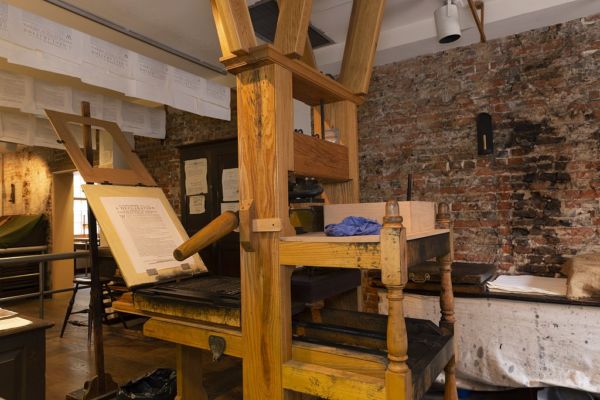
Benjamin Franklin’s press in his printing house, which is now a museum in Philadelphia, Pennsylvania, where he published The Gazette.
Politically, the Herald leaned toward the Whig party. In 1852, the Whig party began to splinter and Southern Whigs mostly turned to the American Party or what would later become known as the “Know-Nothing Party.” By this time, Dr. Bronson became the sole proprietor of the paper and changed its name to the American Star. Among the National leaders of the American Party was Benjamin Harvey Hill of Troup County. After the dissolution of the American Party, the LaGrange paper became known as the Constitutional Union, as it embraced a stance for national unity and opposed secession around 1859.
Thomas J. Bacon took over the paper and changed its name to The Chattahoochee. In 1861, Bacon be-came one of the first to volunteer for service in the war. He was killed at the Battle of Seven Pines on May 31, 1862. The paper was eventually renamed the LaGrange Reporter. In the late nineteenth century, the Reporter was purchased by Samuel Pope Callaway, a Baptist minister. Callaway moved to West Point in 1869 and established a weekly paper known as the State Line Press. This was not West Point’s first newspaper, as it is said that West Point had the county’s first newspaper known as the Georgia Jeffersonian. Hogansville had its own paper on and off throughout its history. Many times Hogansville, West Point, Long Cane, Mountville, and other Troup County communities were included in the LaGrange pa-per, sometimes even having their own columns.
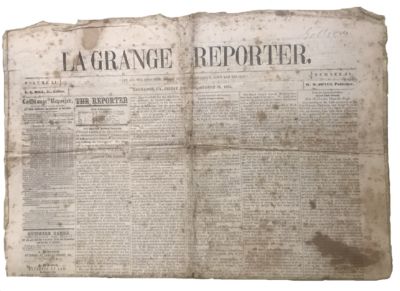
LaGrange Reporter issued on Friday Morning, August 31, 1855. TCA Collections
In 1902, Fuller E. Callaway, Sr. purchased the LaGrange Reporter and successfully increased its circulation. Fuller was also involved with a publication known as the Buzz Saw published by youths of LaGrange. The Buzz Saw was said to have “ripped folks up the back going and coming… No one could have any secrets while the Buzz Saw flourished. It was no respecter of persons.” The publication was likely used for good-natured mischief and focused on the happenings of the local colleges. The ladies of the female colleges probably waited in anticipation for the next publication of the Buzz Saw.
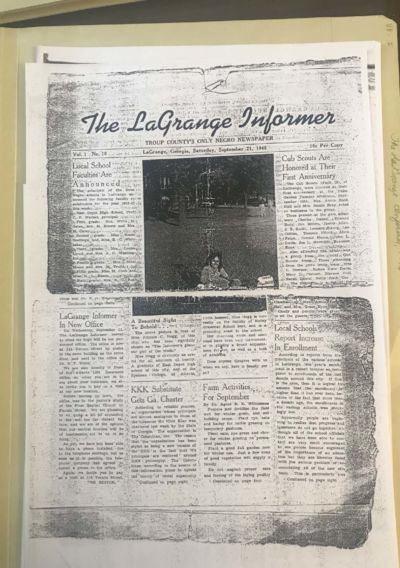
The LaGrange Informer: Troup County’s Only Negro Newspaper, issued Saturday, September 21, 1946. TCA holds only a few copies of this newspaper, and none in original format from before the 1980s. TCA Collections
In 1888, the LaGrange Graphic began publication and passed through several owners until it merged with the Reporter in 1928. The Shuttle was established in 1919 as a newspaper for the textile industry. The Shuttle merged with the Reporter in 1928. Fuller Callaway sold the Reporter in 1904 and the paper would change hands several times before it was purchased by Roy C. Swank and became known as the LaGrange Daily News.
There, of course, have been other publications that circulated throughout Troup County during its history. Local residents took (and many still do) subscriptions to papers from Hogansville, West Point, Atlanta, and Colum-bus. However, some papers published in this area remain widely unknown. One example is The LaGrange Informer that was published as “Troup County’s Only Negro Newspaper” as early as September 21, 1946. In 1946 the paper had its offices for a time next to the office of Dr. Benjamin T. Wood at 114 ½ Vernon Street.
News is an essential part of our lives. The spread of disinformation and untrustworthy information has become more rampant. In understanding a little more about the history of news and the spread of information, perhaps we can all be a little more critical in our own consumption of information. — Alexander O. Hughes
